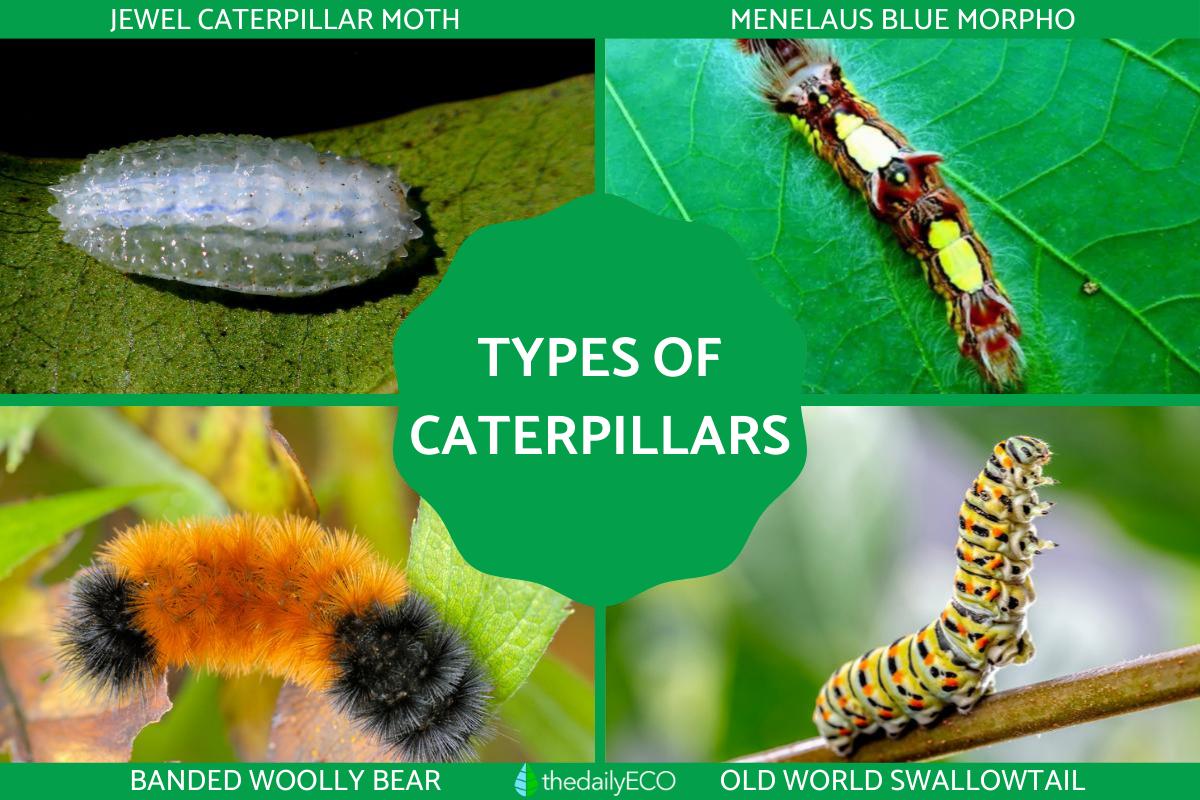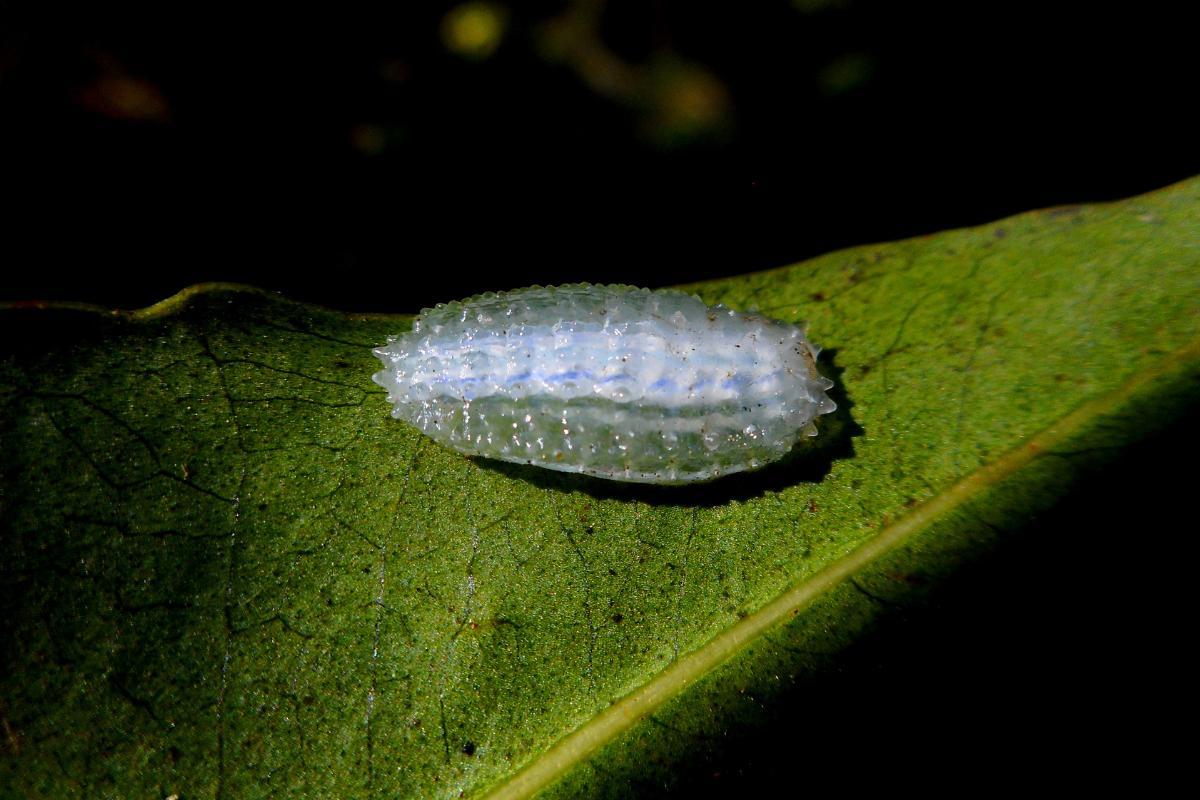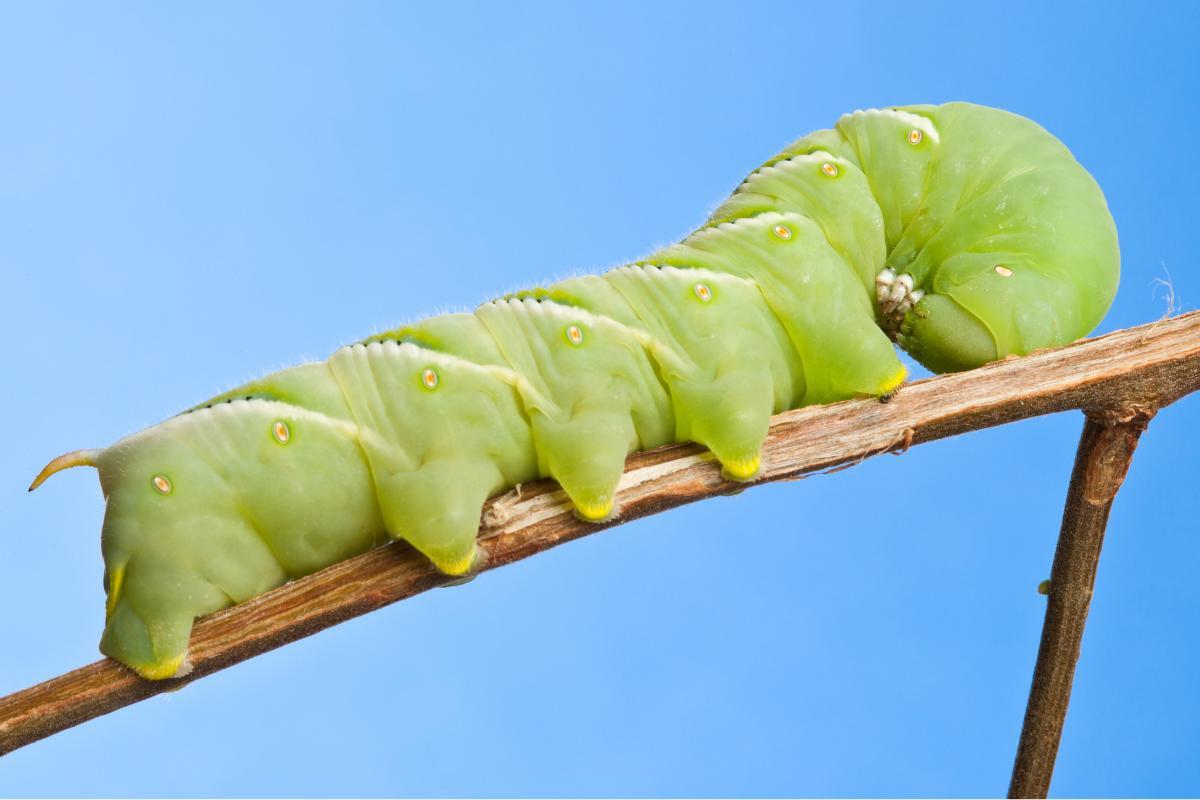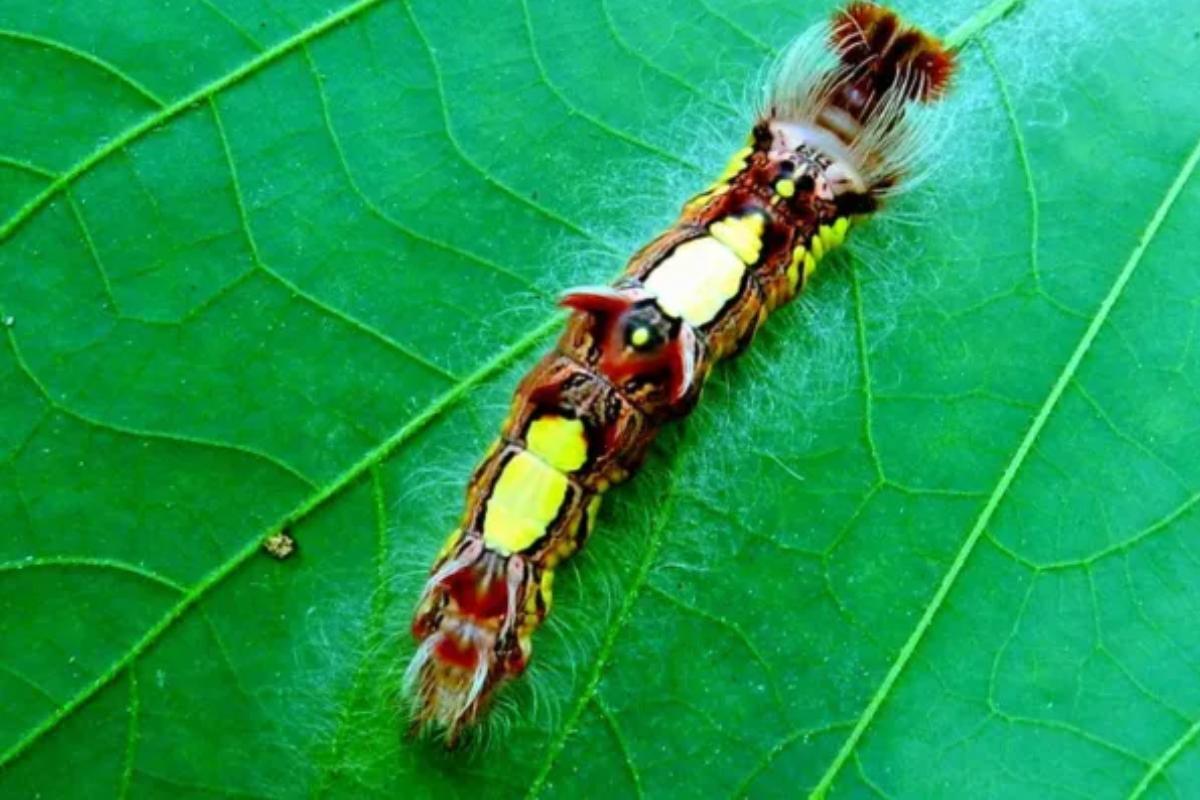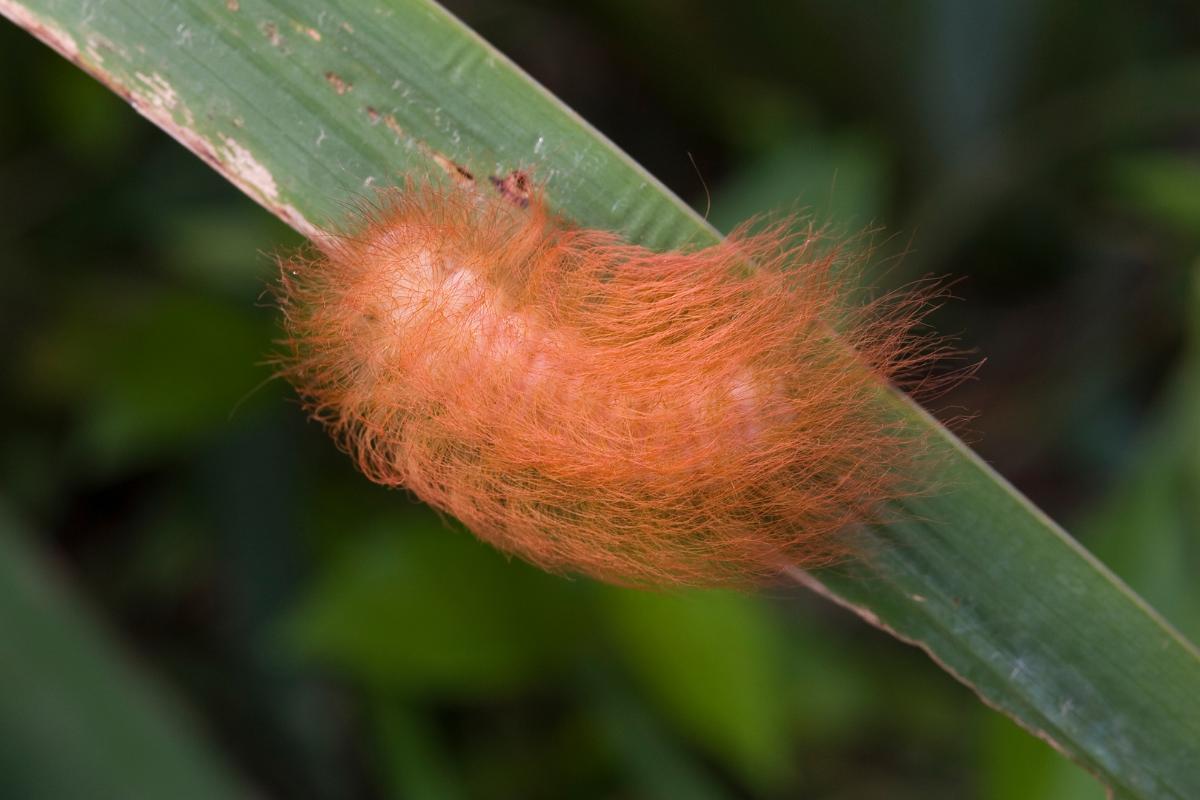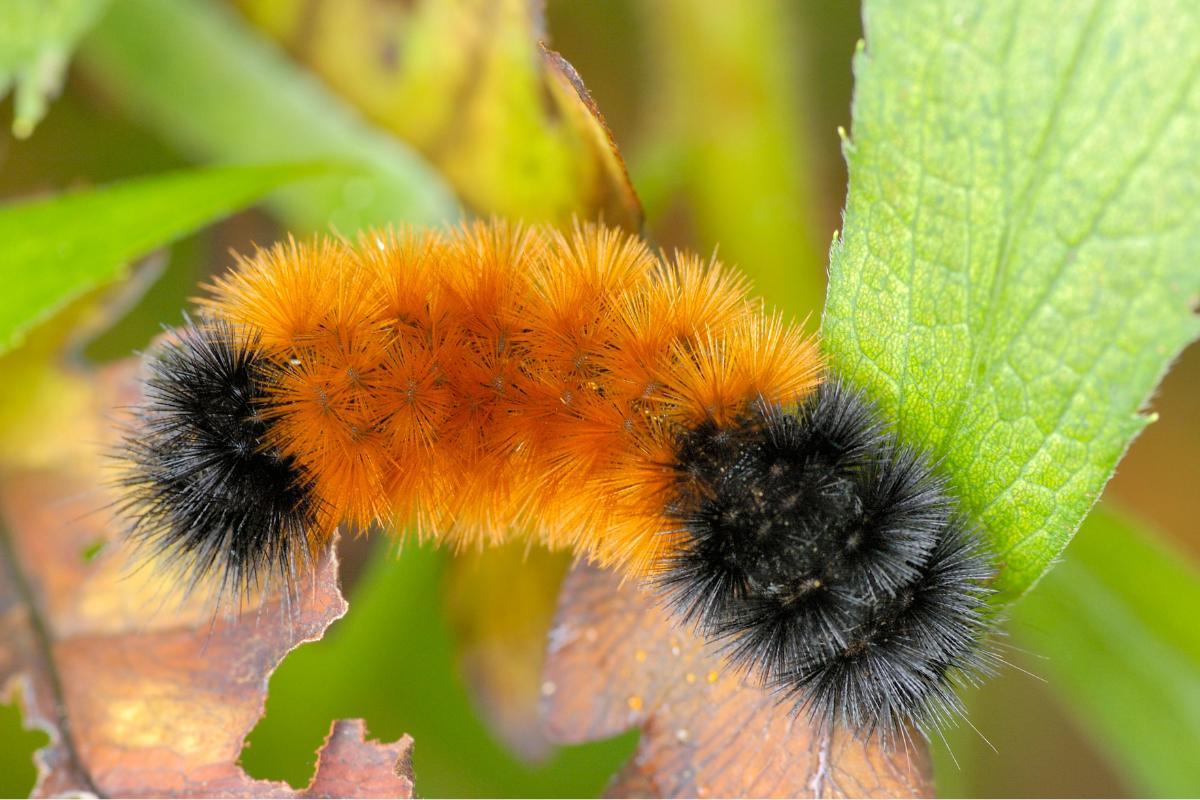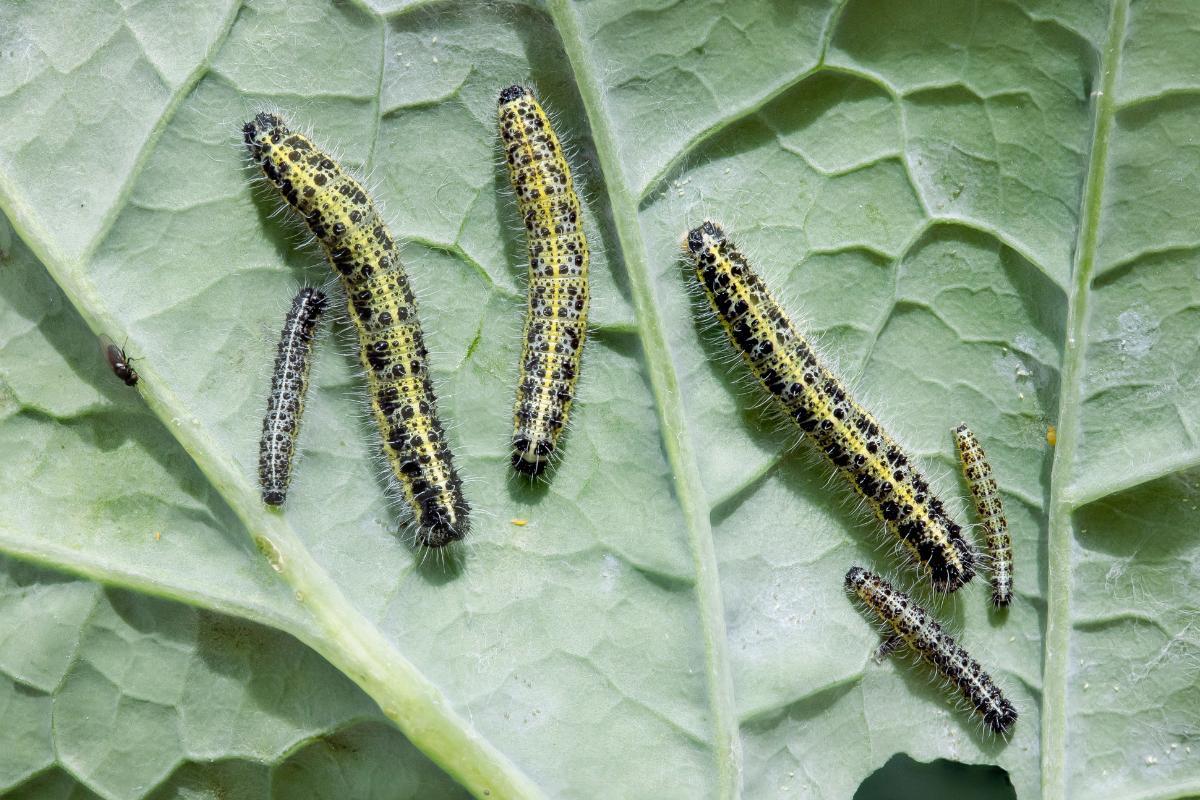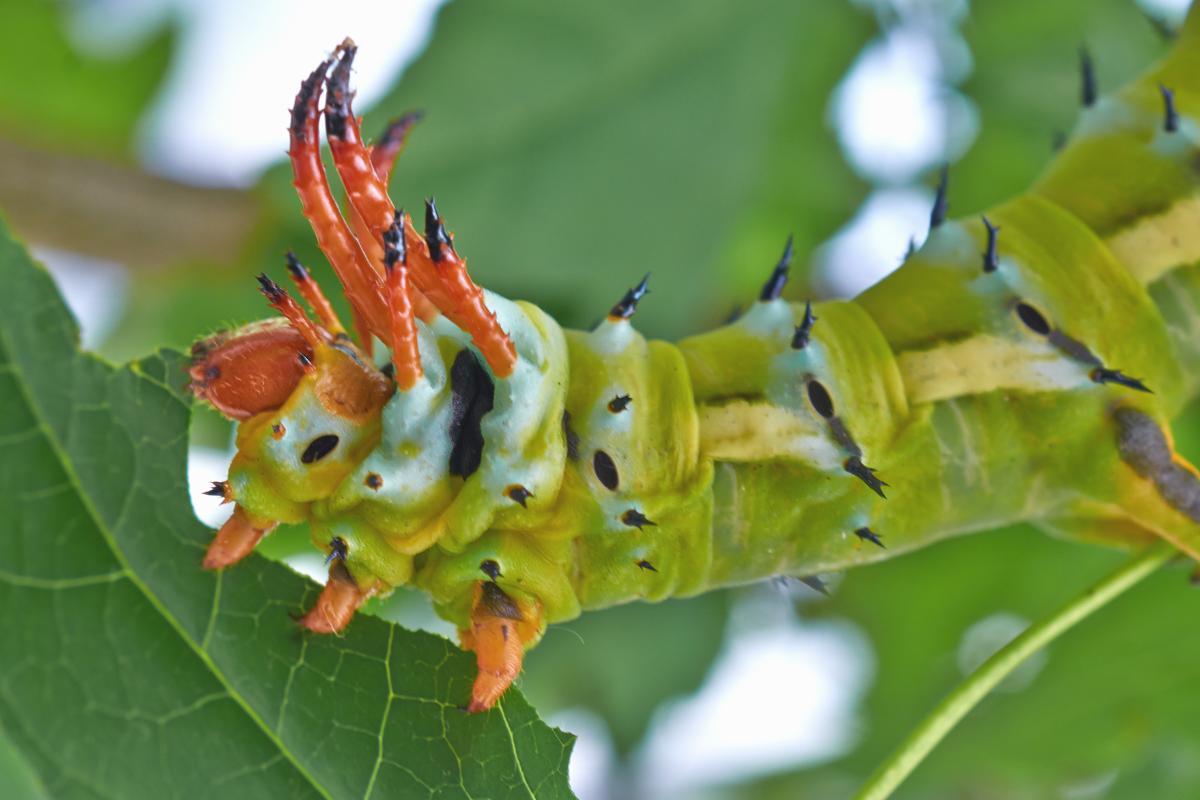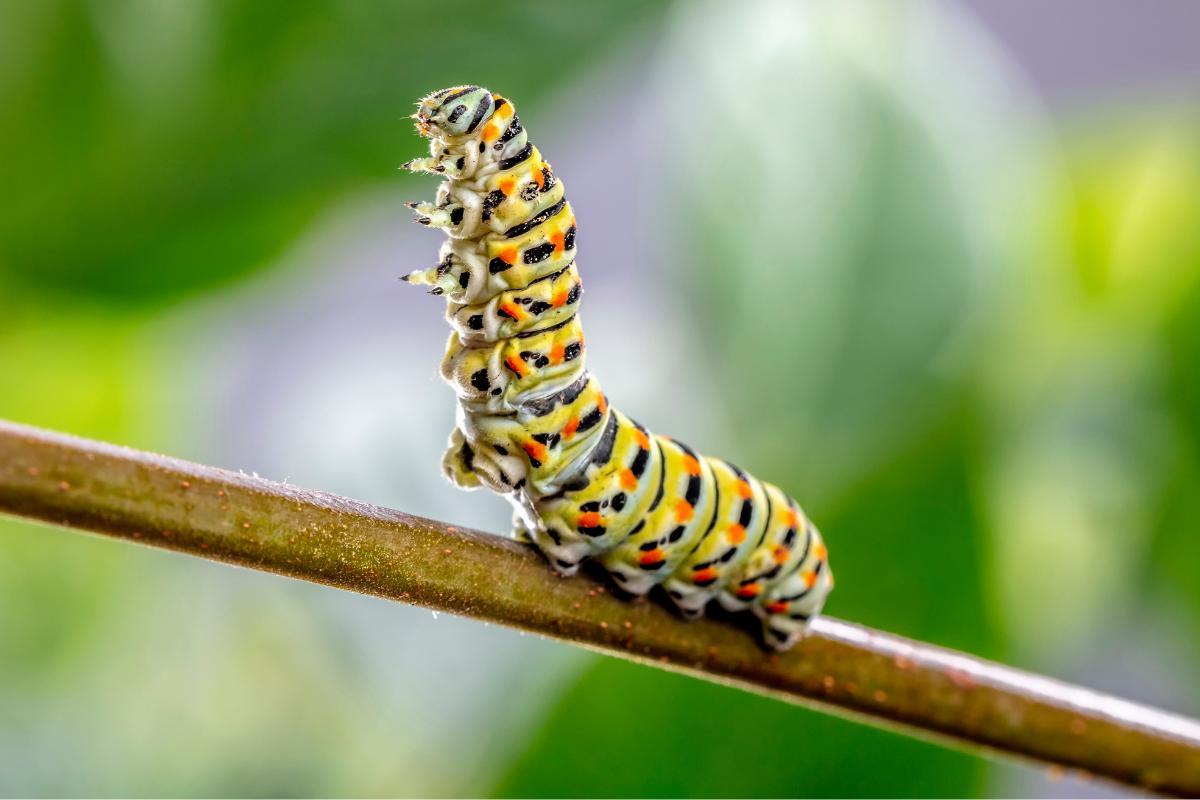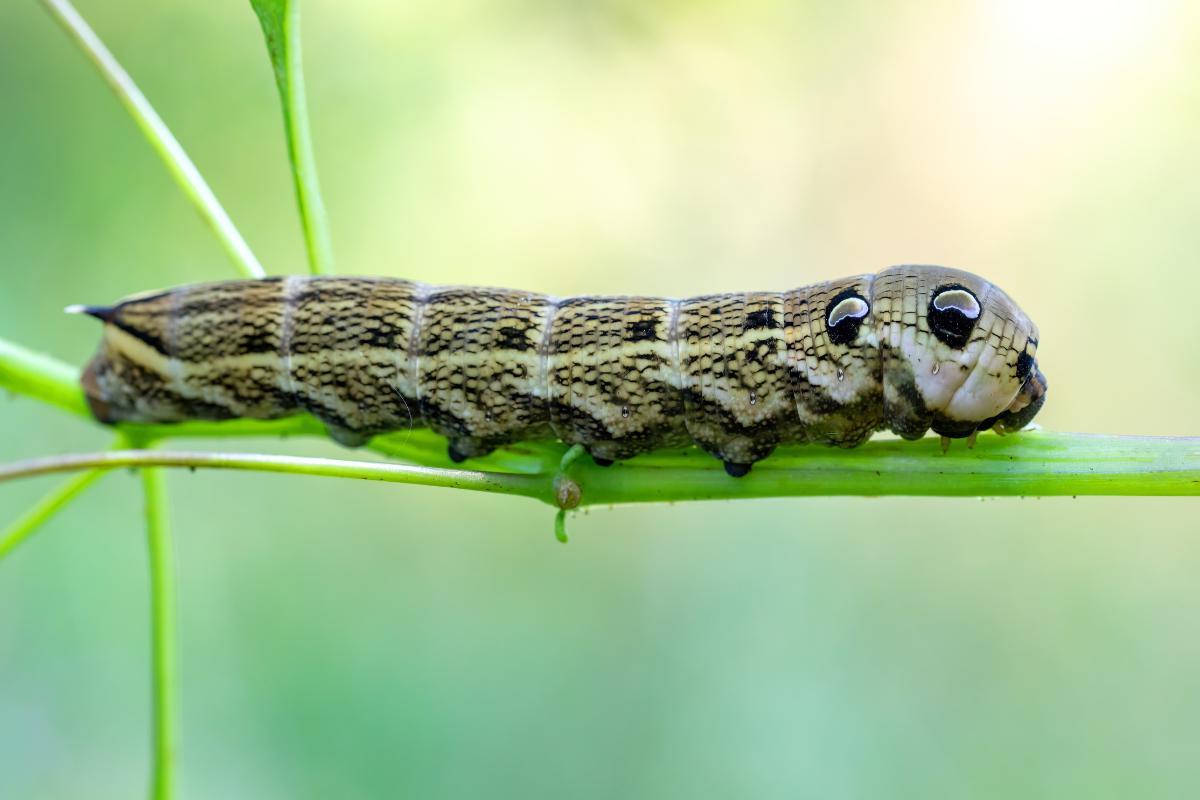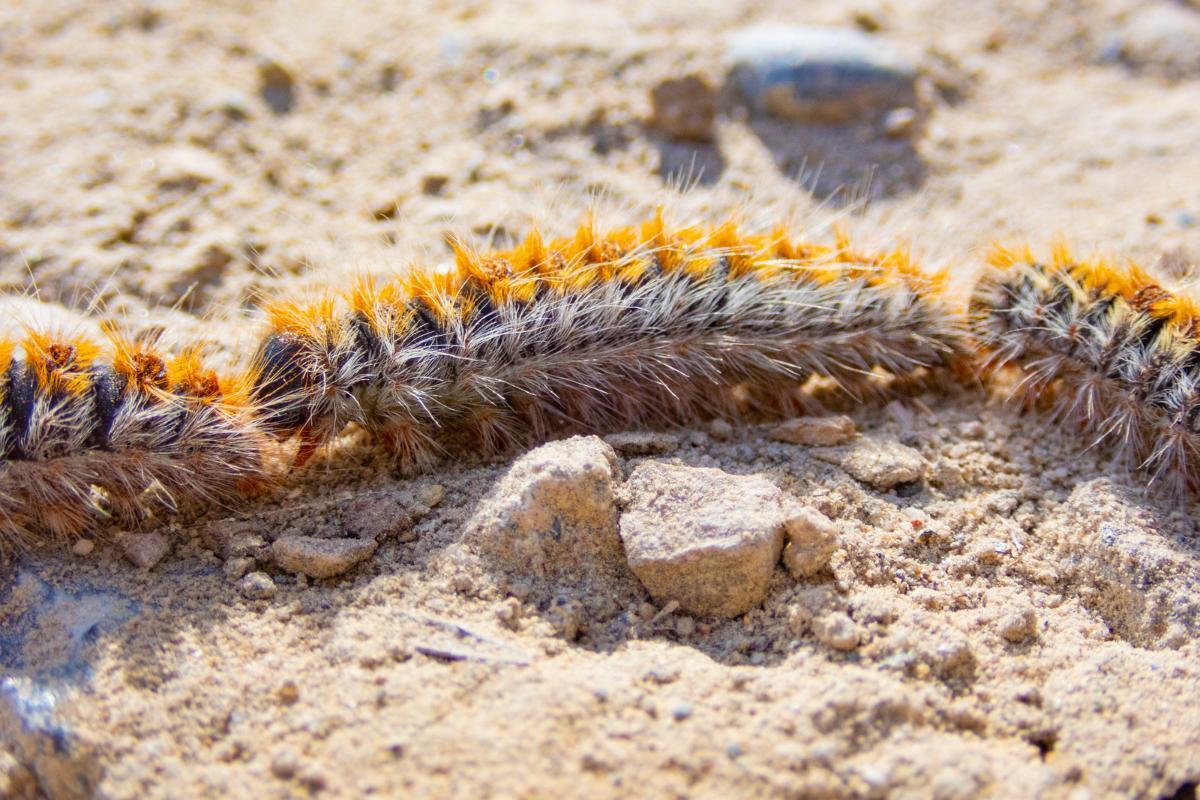Different Types of Caterpillars


Caterpillars are the larval stage of members of the order Lepidoptera, more commonly known as butterflies and moths. It can be difficult to associated the lugubrious and multi-legged caterpillar with its winged adult counterpart. They can be incredibly different in appearance and behavior. Butterflies in particular are known for the beautiful patterns on their wings, but their caterpillar stage may be relatively drab. The opposite may apply to moth species. This is thanks to the transformative process known as metamorphosis. Discover the great diversity of lepidopteran insect species with our thedailyECO list of 10 different types of caterpillars with photos.
- Jewel caterpillar moth (Acraga coa)
- Tomato hornworm (Manduca quinquemaculata)
- Menelaus blue morpho (Morpho menelaus)
- Puss caterpillar (Megalopyge opercularis)
- Banded woolly bear (Pyrrharctia isabella)
- Large white (Pieris brassicae)
- Hickory horned devil (Citheronia regalis)
- Old World swallowtail (Papilio machaon)
- Elephant hawk moth (Deilephila elpenor)
- Pine processionary caterpillar (Thaumetopoea pityocampa)
- Do all caterpillars become butterflies or moths?
Jewel caterpillar moth (Acraga coa)
While the adult moth has a very distinctive fuzzy orange appearance, this insect species is named after its larval form. The jewel caterpillar moth looks as if it is made of delicate and ornate crystal. It is translucent white and entirely covered in short, transparent spines with an orange dot. It is one of the different types of caterpillar which can be found in Mexico, with populations extending into Central America.
Discover more about the larval stages of insects with our article on worms hanging from the ceiling.

Tomato hornworm (Manduca quinquemaculata)
There are various types of green caterpillars, with the tomato hornworm being one of the most striking. Another caterpillar moth, this is the larva of the five-spotted hawkmoth. Their common caterpillar name derives from the fact that they like to feed on tomato plants, something which can make them very unwelcome to farmers and gardeners.
Their plump body has several pairs of legs and they are noted for a striking horn appendage at the tail end of their body. They sleep with the front of their bodies raised, like a sphinx. They are closely related to the tobacco hornworm which has a similar appearance.

Menelaus blue morpho (Morpho menelaus)
Moving away from moths, the Menelaus blue morpho is the first butterfly on our list of the different types of caterpillar. A type of hair caterpillar, its appearance is complex. They have striped patterns in shades of yellow and brown and white, with red and white hairs growing from its sides and back.
These caterpillar hairs are a protective adaptation of the butterfly larva. They sting when they come into contact with the skin, ensuring it will not be eaten by predators in doing so. It is a good example of the extent of differences between the adult and larval forms. The adult Menelaus blue morpho is very different in pattern, color and morphology when compared to its younger form.
Although they both arise from caterpillars, there are key differences between moths and butterflies.

Puss caterpillar (Megalopyge opercularis)
Its larval form has many names, including the puss caterpillar, asp caterpillar, woolly slug or fire caterpillar. This last name is due to both their appearance and the fact they have nasty surprise for anyone who touches them. Long fuzzy hairlike setae on their body are red like the licks of flames, but they are highly toxic to the touch. While they might look like a cuddly toy, some liken the intense radiating pain of their venom to that of a broken bone.
When this caterpillar larva develops, it becomes the southern flannel moth. A very striking moth, they are also covered in hairy setae in their adult form, even on their wings. However, these setae are no longer venomous and touching the adult moth will not give a reaction.
Check out our related guide to discover the most deadly poisonous caterpillars in the world.

Banded woolly bear (Pyrrharctia isabella)
Another of the different caterpillars which has a different name for adult and larval forms. Also known as the woolly worm, the banded woolly bear is the larva of the Isabella tiger moth. They are identifiable by their black bands at the front and tail end of the caterpillar with a red band in the middle. They look a little like a stubby pipe cleaner walking on black legs.
These types of caterpillars are found in both cold and temperate zones. Despite having long hairlike setae, they are not known to be venomous. They can still cause an allergic reaction in people with sensitivities. They can freeze in winter, but are able to survive this process thanks to specialized tissues. It will then thaw in the spring.

Large white (Pieris brassicae)
Also known as the cabbage butterfly, this is a type of caterpillar often found in Europe, north Africa and parts of Asia. Its name is derived from the fact it both hatches on cabbage crops and uses them as food. Adults lay their eggs on the leaves, they begin to eat the leaves as soon as the caterpillars hatch. Not only does this damage the leaves, but the droppings can be toxic to the cabbage plant. They are long and hairy, but not toxic.

Hickory horned devil (Citheronia regalis)
This is undoubtedly one of the most striking caterpillars in the world. It is known as the hickory horned devil due to its horns made of cuticle which appear all over their body, but which are particularly devil-like on the head. Although they appear intimidating and fearsome, they are completely harmless. This is likely a form of Batesian mimicry whereby they take on the appearance of a dangerous caterpillar when they themselves can do no harm.
When fully grown, the hickory horned devil becomes the regal moth, also known as the royal walnut moth. As soon as they hatch from their pupa, this moth will look for a mate by emitting pheromones. They do not eat in adult form and spend the majority of their very short lives either mating or laying eggs.

Old World swallowtail (Papilio machaon)
A relatively common butterfly in the Northern Hemisphere, the Old World swallowtail is also known as the common yellow swallowtail. Their common name derives from the fact that the adult butterfly has a little trailing edge at the bottom of their wing which looks similar to the wings of a swallow. Despite the common name, they can also be found in the Americas, although they are not as abundant.
The caterpillar of this species is green and plump with black stripes and orange dots. This gives them the appearance as if they were bird droppings, something which can help them stay camouflaged.

Elephant hawk moth (Deilephila elpenor)
The larval stage of the elephant hawk moth is a type of brown caterpillar which almost looks more like a slug than a caterpillar. Large spots on the side of their tail look like two cartoonish eyes, markings they use as a strategy to confuse predators.
There is also a green morph of this caterpillar which looks a little more colorful, but both are dull when compared to the adult moth. The adult form has hairlike setae which are reddish brown and pink in color. The pink appears in different patterns according to sex, with the underside having more pink than the dorsal side.
Discover more about how lepidopterans survive with our article asking how do insects breathe?

Pine processionary caterpillar (Thaumetopoea pityocampa)
While the adult moth form of the pine processionary caterpillar does not cause harm, the larval caterpillar is considered a serious pest. As their name suggests, they feed on pine trees and can be very destructive for them. In addition to their destruction of flora, their urticating hairs are highly venomous and pose a threat to both humans and animals.
Another reason for their common name is the fact these caterpillars move in a procession, marching like regimental soldiers. They are known to breed in winter in temperate areas, with global warming increasing their population increases. Various methods are used to combat them and to protect the public from harm.

Do all caterpillars become butterflies or moths?
All of the different types of caterpillar species will eventually become a butterfly or moth in their adult form. This is a result of their life cycle whereby they enter a pupal stage and undergo complete metamorphosis. This is a biological process whereby distinct developmental stages exist with completely different morphologies that do not resemble each other.
The caterpillar is not the first stage of the lepidopteran life cycle. They start as eggs which become caterpillars when they hatch. They then enter the pupal stage before finally emerging as the adult insect. This adult then carries out reproduction to fertilize and lay new eggs. In this way, caterpillars cannot reproduce since they lack reproductive organs to do so. Only after metamorphosis do they develop.
There are some insects which have a larval stage which somewhat resembles the caterpillar. This is especially so in the insect order Hymenoptera, the order which contains bees and ants. In particular, sawflies have a larval stage which looks very similar to caterpillars, but they have more prolegs and lack crochets (hook-like structures). While they may look like caterpillars, they are actually types of maggot.
You can learn more about how maggots become adult with our article detailing the life cycle of flies.
If you want to read similar articles to Different Types of Caterpillars, we recommend you visit our Wild animals category.
- Beatty, R., Beer, A., & Deeming, C. (2010). The Book of Nature. Great Britain: Dorling Kindersley.





